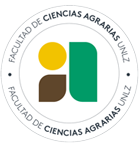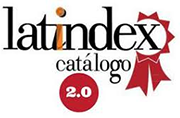Atributos forrajeros de la vegetación integrante de un pastizal natural de un establecimiento ganadero de la Cuenca del Salado bajo pastoreo regenerativo. Forage attributes of the vegetation of a natural grassland from a livestock establishment in the Salado Basin under regenerative grazing
Resumen
Palabras Clave: Composición florística; Contribución forrajera especifica; Valor Pastoral; Producción forrajera; Calidad forrajera.
Abstract: One way to conserve and improve the diversity of natural grasslands is through regenerative livestock management. Measuring floristic composition makes it possible to predict the behavior of species and how their variation impacts the biological community. With the objetive of evaluating this behavior on a natural grassland, were determined: i) presented species, ii) quality through the specific forage contribution and pastoral value and iii) amount of dry matter (DM) per hectare (kg DM/ha). The work was carried out at the “El Remanso del Salado” farm located in Castelli, Buenos Aires, Argentina, on april 2020, dedicated to raising cattle on grassland through regenerative management by PRV grazing management. On 34,5 ha, 4 georeferenced transects of 10 linear meters were marked. The species were identified and grouped into functional groups (FG). The Specific and Total Forage Contribution (SFC and TSFC) were calculated, as well as Pastoral Value (PV) per FG and total (TPV). The dry matter production/ha (kg DM/ha) was also determined. Data were analyzed using ANOVA and DGC mean comparison test (p<0.05) with Infostat (2022). The 25 spp founded were grouped into 11 GF. The 28% of the total spp found corresponded to FG Poaceae, 20% to FG Fabaceae and 52% to FG Others. The TSFC was 99.57% (71,87% Poaceae, 17,45% Fabaceae and 10,25% Others). The TPV showed grasses with high quality (67.56). From the total 2.797.83 kg DM/ha Poaceae contribute 84.26%, Fabaceae 10.01% and Others 5.71%. For the conditions of this work, the natural grassland under study is formed by high-quality grasses according to their PV. Furthermore, the SFC together with the PV for FG positioned the Poaceae as the family with the greatest contribution to the quality and quantity of forage in the autumn.
Keywords: Floristic composition; Specific Forage contribution; Pastoral Value; Forage Production; Forage Quality.
Texto completo:
PDFEnlaces de Referencia
- Por el momento, no existen enlaces de referencia

This work is licensed under a Creative Commons Attribution-NonCommercial 4.0 International License.
La Revista Científica y Técnica Agropecuaria, Agroindustrial y Ambiental es una revista en formato digital fundada en el año 2021. Anteriormente denominada Revista de Divulgación Técnica, Agropecuaria, Agroindustrial y Ambiental. Se publican tres números al año en los meses de junio, octubre y febrero.
Órgano Editor: Secretaría de Investigación, Facultad de Ciencias Agrarias, Universidad Nacional de Lomas de Zamora
E mail: revistafca@agrarias.unlz.edu.ar
Teléfono: +54 11 2078 -0500
Dirección: Camino de Cintura y Juan XXIII, Lomas de Zamora, BA, Argentina
 Revista Científica y Técnica Agropecuaria, Agroindustrial y Ambiental
Revista Científica y Técnica Agropecuaria, Agroindustrial y Ambiental


